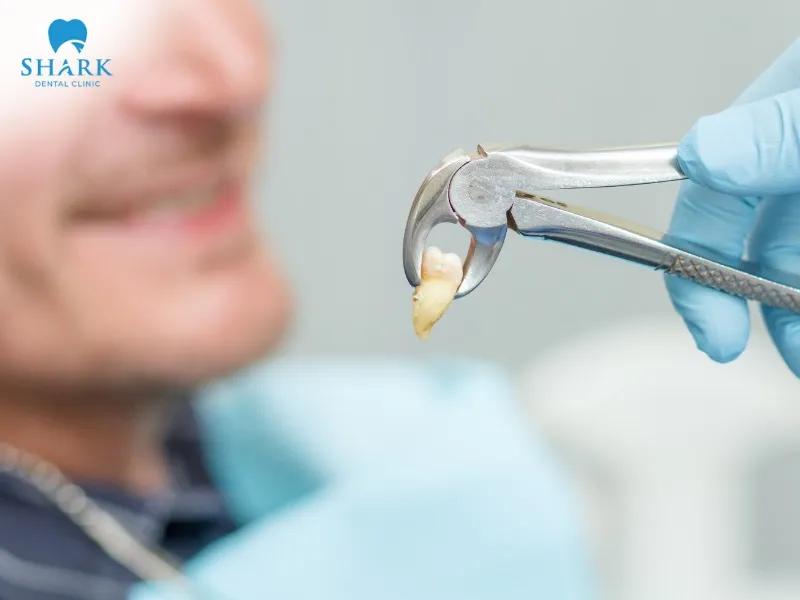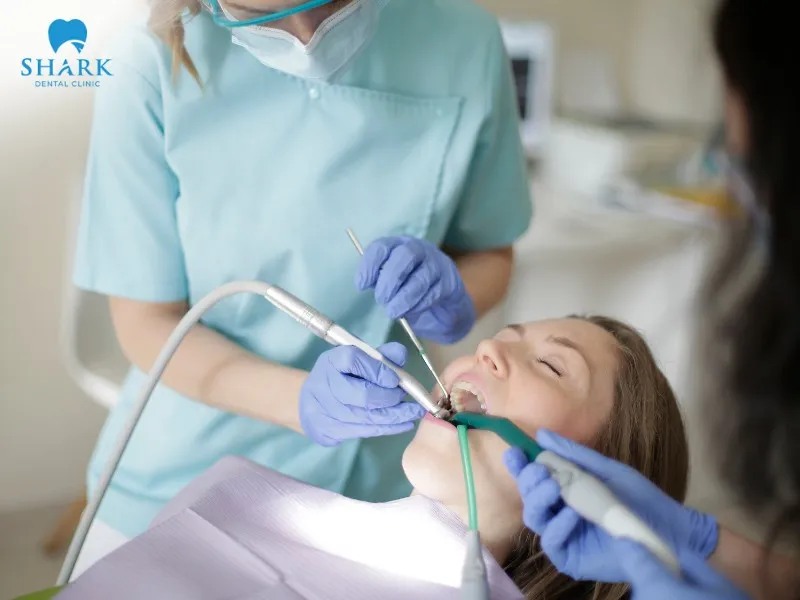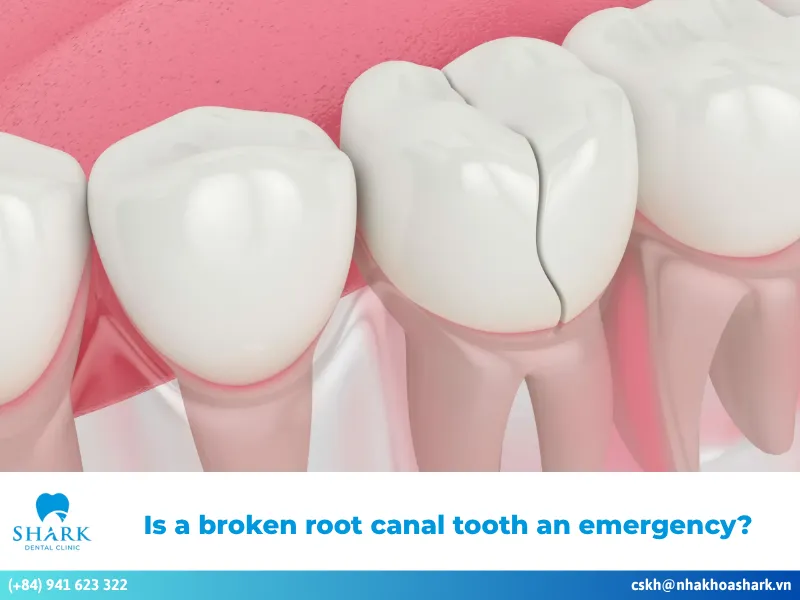Root canal treatment is performed when the tooth pulp becomes inflamed, loses function, or poses a risk to the original tooth structure. So, can a dentist remove a root canal tooth? What does that extraction procedure involve, and how should you care for your teeth afterward? Let’s explore the answers to these questions below!
Can a dentist remove a root canal tooth?
Yes, a dentist can extract a tooth even if it has undergone a root canal procedure. Root canal treatment is often necessary in various cases, especially when the pulp has ceased to function, is inflamed or infected, or when the root canal has been compromised by bacterial invasion. After the pulp is removed, the tooth often becomes more brittle and prone to fracture than a healthy tooth.
If a root canal-treated tooth becomes chipped and causes sensitivity, pain, or discomfort that interferes with daily activities such as chewing and speaking, extraction may be considered. Tooth extraction can help preserve overall oral health, minimize the risk of infection, and ensure a healthier mouth.

What are the common reasons for a dentist to recommend the extraction of a tooth that has undergone a root canal procedure?
Patients may be advised to remove a tooth that has had a root canal for several reasons:
- Prolonged tooth pain: If bacteria remain after root canal treatment, they can continue to attack the root canal, leading to persistent inflammation and causing pain after a root canal alongside increased sensitivity. If the initial treatment does not resolve the issue, extraction may be a practical solution.
- Chipped or fractured tooth: Teeth that have undergone root canal treatment can become brittle and more susceptible to fractures. Daily activities, such as chewing or an accidental impact, can cause breaks that cannot be repaired. In these cases, extraction followed by tooth replacement is often recommended.
- Failed root canal treatment: If the pulp was severely infected or if the root canal procedure was not performed properly, resulting in treatment failure, extraction should be considered. Removing the tooth can limit bacterial activity and protect overall oral health.
- Periodontal disease: Severe infections in the gums or jawbone that support the tooth can compromise its stability. This is particularly concerning if the infection leads to an abscess after root canal treatment. Additionally, after a root canal, the tooth may lose essential nutrients, making it prone to loosening or falling out. Therefore, in cases of advanced periodontal disease or persistent infection, extraction may be necessary.
- Structural damage: If a root canal tooth is severely damaged or at high risk of infection or cavities that could affect neighboring teeth, extraction is recommended. After removal, options for restoration include dental implants, porcelain bridges, or removable dentures.
There are several reasons a dentist may recommend extracting a tooth that has had root canal treatment, including structural damage, infection, or fracturing. Based on your specific oral condition, your dentist will provide advice on the most effective and safe solution to preserve your overall oral health.

The process of removing a root canal tooth
Extracting a tooth that has undergone root canal treatment requires a skilled dentist and modern equipment. Here’s a clear overview of the root canal tooth extraction process used in reputable dental clinics:
Step 1: General examination
The dentist performs a thorough examination, including taking X-rays, assessing the oral structure, evaluating the extent of tooth damage, and identifying any potential risks that may arise during the procedure.
Step 2: Local anesthesia and oral hygiene
Once a treatment plan is developed, the dentist administers local anesthesia to the area where the tooth will be extracted. This anesthesia helps minimize pain and discomfort during the procedure, with the dosage carefully calculated to ensure the patient’s safety.

Step 3: Extraction of the root canal tooth
Using sterilized instruments, the dentist makes an incision in the gums to remove the tooth from its original position. Since root canal-treated teeth are often brittle and prone to cracking, the extraction must be performed with great care and precision to avoid leaving any root fragments behind.
Step 4: Disinfection of the extraction site
After the tooth is removed, the dentist thoroughly cleans the empty socket and disinfects the oral cavity. This step eliminates any remaining bacteria, promotes quick healing, and reduces the risk of serious infection.
Step 5: Post-extraction care
Following the extraction, the dentist provides the patient with guidance on proper oral care, daily habits, diet, and lifestyle to ensure safe and effective recovery.

While the process of removing a root canal tooth is not overly complex, it requires a dentist with expertise and experience to handle any unexpected issues and ensure the patient’s safety.
>>> See more: Root canal treatment costs in Ho Chi Minh City
Post-removal care and precautions
Tooth extraction is a common minor surgical procedure in dentistry. After an extraction, it is crucial to maintain proper oral hygiene and a healthy diet. Here are effective measures for post-extraction care and infection prevention after removing a root canal-treated tooth:
- Maintain oral hygiene regularly: After the tooth is removed, brush gently with a soft-bristled toothbrush. Additionally, rinse your mouth frequently to keep the oral cavity clean.
- Eat soft foods: After extraction, your jaw may be sensitive and easily irritated. For 5–7 days post-extraction, prioritize soft, easy-to-chew, and easy-to-swallow foods. Avoid hard, tough, overly hot, or cold foods to prevent gum irritation.
- Manage pain: Swelling and discomfort around the gums are common after extraction and can interfere with daily activities. Applying cold compresses to the cheeks can help reduce swelling and numb the area.
- Avoid harmful habits: Habits such as smoking, alcohol consumption, nail-biting, and teeth grinding can damage teeth and soft tissues. After extraction, it’s best to limit or completely stop these habits.
- Regular follow-up: Attend scheduled dental check-ups to monitor the healing process and assess recovery.

Through this article, readers now have a clear understanding of can a dentist remove a root canal tooth. We hope this information helps you practice effective oral care and maintain a healthy, bright smile.
>>> See more: How long does a root canal take to heal?










